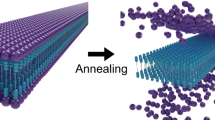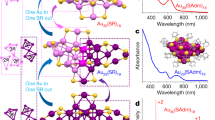Abstract
Nature uses a combination of non-covalent interactions to create a hierarchy of complex systems from simple building blocks. One example is the selective association of the hydrophobic side chains that are a strong determinant of protein organization. Here, we report a parallel mode of assembly in DNA nanotechnology. Dendritic alkyl-DNA conjugates are hybridized to the edges of a DNA cube. When four amphiphiles are on one face, the hydrophobic residues of two neighbouring cubes engage in an intermolecular ‘handshake’, resulting in a dimer. When there are eight amphiphiles (four on the top and bottom cube faces, respectively), they engage in an intramolecular ‘handshake’ inside the cube. This forms the first example of a monodisperse micelle within a DNA nanostructure that encapsulates small molecules and releases them by DNA recognition. Creating a three-dimensional pattern of hydrophobic patches, like side chains in proteins, can result in specific, directed association of hydrophobic domains with orthogonal interactions to DNA base-pairing.
This is a preview of subscription content, access via your institution
Access options
Subscribe to this journal
Receive 12 print issues and online access
$259.00 per year
only $21.58 per issue
Buy this article
- Purchase on Springer Link
- Instant access to full article PDF
Prices may be subject to local taxes which are calculated during checkout






Similar content being viewed by others
References
Seeman, N. C. DNA in a material world. Nature 421, 427–431 (2003).
Lin, C., Liu, Y. & Yan, H. Designer DNA nanoarchitectures. Biochemistry 48, 1663–1674 (2009).
Deng, Z., Lee, S. H. & Mao, C. DNA as nanoscale building blocks. J. Nanosci. Nanotechnol. 5, 1954–1963 (2005).
Goodman, R. P. et al. Rapid chiral assembly of rigid DNA building blocks for molecular nanofabrication. Science 310, 1661–1665 (2005).
Rothemund, P. W. K. Folding DNA to create nanoscale shapes and patterns. Nature 440, 297–302 (2006).
Woo, S. & Rothemund, P. W. K. Programmable molecular recognition based on the geometry of DNA nanostructures. Nature Chem. 3, 620–627 (2011).
Douglas, S. M. et al. Self-assembly of DNA into nanoscale three-dimensional shapes. Nature 459, 414–418 (2009).
Han, D. et al. DNA origami with complex curvatures in three-dimensional space. Science 332, 342–346 (2011).
Andersen, E. S. et al. Self-assembly of a nanoscale DNA box with a controllable lid. Nature 459, 73–76 (2009).
Schulman, R., Yurke, B. & Winfree, E. Robust self-replication of combinatorial information via crystal growth and scission. Proc. Natl Acad. Sci. USA 109, 6405–6410 (2012).
Rajendran, A., Endo, M., Katsuda, Y., Hidaka, K. & Sugiyama, H. Programmed two-dimensional self-assembly of multiple DNA origami jigsaw pieces. ACS Nano 5, 665–671 (2010).
Ke, Y., Ong, L. L., Shih, W. M. & Yin, P. Three-dimensional structures self-assembled from DNA bricks. Science 338, 1177–1183 (2012).
Yang, H. et al. Metal–nucleic acid cages. Nature Chem. 1, 390–396 (2009).
Wang, W., Wan, W., Zhou, H.-H., Niu, S. & Li, A. D. Q. Alternating DNA and π-conjugated sequences. Thermophilic foldable polymers. J. Am. Chem. Soc. 125, 5248–5249 (2003).
Carneiro, K. M. M. et al. Stimuli-responsive organization of block copolymers on DNA nanotubes. Chem. Sci. 3, 1980–1986 (2012).
Milnes, P. J. et al. Sequence-specific synthesis of macromolecules using DNA-templated chemistry. Chem. Commun. 48, 5614–5616 (2012).
Kwak, M. & Herrmann, A. Nucleic acid amphiphiles: synthesis and self-assembled nanostructures. Chem. Soc. Rev. 40, 5745–5755 (2011).
Neelakandan, P. P. et al. Hydrophobic self-assembly of a perylenediimide-linked DNA dumbbell into supramolecular polymers. J. Am. Chem. Soc. 132, 15808–15813 (2010).
Eryazici, I., Yildirim, I., Schatz, G. C. & Nguyen, S. T. Enhancing the melting properties of small molecule–DNA hybrids through designed hydrophobic interactions: an experimental–computational study. J. Am. Chem. Soc. 134, 7450–7458 (2012).
Patwa, A., Gissot, A., Bestel, I. & Barthélémy, P. Hybrid lipid oligonucleotide conjugates: synthesis, self-assemblies and biomedical applications. Chem. Soc. Rev. 40, 5844–5854 (2011).
Chan, Y. H., Lenz, P. & Boxer, S. G. Kinetics of DNA-mediated docking reactions between vesicles tethered to supported lipid bilayers. Proc. Natl Acad. Sci. USA 104, 18913–18918 (2007).
Woller, J. G., Börjesson, K., Svedhem, S. & Albinsson, B. Reversible hybridization of DNA anchored to a lipid membrane via porphyrin. Langmuir: ACS J. Surf. Colloids 28, 1944–1953 (2012).
Benkoskr, J. J. & Höök, F. Lateral mobility of tethered vesicle–DNA assemblies. J. Phys. Chem. B 109, 9773–9779 (2005).
Albinsson, B., Hannestad, J. K. & Börjesson, K. Functionalized DNA nanostructures for light harvesting and charge separation. Coord. Chem. Rev. 256, 2399–2413 (2012).
Langecker, M. et al. Synthetic lipid membrane channels formed by designed DNA nanostructures. Science 338, 932–936 (2012).
Raouane, M., Desmaële, D., Urbinati, G., Massaad-Massade, L. & Couvreur, P. Lipid conjugated oligonucleotides: a useful strategy for delivery. Bioconj. Chem. 23, 1091–1104 (2012).
Thompson, M. P., Chien, M.-P., Ku, T.-H., Rush, A. M. & Gianneschi, N. C. Smart lipids for programmable nanomaterials. Nano Lett. 10, 2690–2693 (2010).
Kurz, A. et al. Lipid-anchored oligonucleotides for stable double-helix formation in distinct membrane domains. Angew. Chem. Int. Ed. 45, 4440–4444 (2006).
O'Shea, E. K., Klemm, J. D., Kim, P. S. & Alber, T. X-ray structure of the GCN4 leucine zipper, a two-stranded, parallel coiled coil. Science 254, 539–544 (1991).
Koga, N. et al. Principles for designing ideal protein structures. Nature 491, 222–227 (2012).
Boyle, A. L. et al. Squaring the circle in peptide assembly: from fibers to discrete nanostructures by de novo design. J. Am. Chem. Soc. 134, 15457–15467 (2012).
Schnitzler, T. & Herrmann, A. DNA block copolymers: functional materials for nanoscience and biomedicine. Acc. Chem. Res. 45, 1419–1430 (2012).
Wu, Y., Sefah, K., Liu, H., Wang, R. & Tan, W. DNA aptamer–micelle as an efficient detection/delivery vehicle toward cancer cells. Proc. Natl Acad. Sci. USA 107, 5–10 (2010).
Wang, L. et al. Reversibly controlled morphology transformation of an amphiphilic DNA–dendron hybrid. Chem. Commun. 48, 3715–3717 (2012).
Ponnuswamy, N., Cougnon, F. B. L., Clough, J. M., Pantoş, G. D. & Sanders, J. K. M. Discovery of an organic trefoil knot. Science 338, 783–785 (2012).
Wenz, G., Han, B.-H. & Müller, A. Cyclodextrin rotaxanes and polyrotaxanes. Chem. Rev. 106, 782–817 (2006).
Kilah, N. L. et al. Enhancement of anion recognition exhibited by a halogen-bonding rotaxane host system. J. Am. Chem. Soc. 132, 11893–11895 (2010).
Liu, H. et al. DNA-based micelles: synthesis, micellar properties and size-dependent cell permeability. Chem. Eur. J. 16, 3791–3797 (2010).
Greenspan, P., Mayer, E. P. & Fowler, S. D. Nile red: a selective fluorescent stain for intracellular lipid droplets. J. Cell Biol. 100, 965–973 (1985).
Greenspan, P. & Fowler, S. D. Spectrofluorometric studies of the lipid probe, Nile red. J. Lipid Res. 26, 781–789 (1985).
McLaughlin, C. K. et al. Three-dimensional organization of block copolymers on ‘DNA- minimal' scaffolds. J. Am. Chem. Soc. 134, 4280–4286 (2012).
Borjesson, K., Lundberg, E. P., Woller, J. G., Norden, B. & Albinsson, B. Soft-surface DNA nanotechnology: DNA constructs anchored and aligned to lipid membrane. Angew. Chem. Int. Ed. 50, 8312–8315 (2011).
Ding, K., Alemdaroglu, F. E., Börsch, M., Berger, R. & Herrmann, A. Engineering the structural properties of DNA block copolymer micelles by molecular recognition. Angew. Chem. Int. Ed. 46, 1172–1175 (2007).
Chien, M.-P., Rush, A. M., Thompson, M. P. & Gianneschi, N. C. Programmable shape-shifting micelles. Angew. Chem. Int. Ed. 49, 5076–5080 (2010).
Lo, P. K. et al. Loading and selective release of cargo in DNA nanotubes with longitudinal variation. Nature Chem. 2, 319–328 (2010).
Erben, C. M., Goodman, R. P. & Turberfield, A. J. Single-molecule protein encapsulation in a rigid DNA cage. Angew. Chem. Int. Ed. 45, 7414–7417 (2006).
Jiang, Q. et al. DNA origami as a carrier for circumvention of drug resistance. J. Am. Chem. Soc. 134, 13396–13403 (2012).
Lim, Y.-b., Lee, E. & Lee, M. Controlled bioactive nanostructures from self-assembly of peptide building blocks. Angew. Chem. Int. Ed. 46, 9011–9014 (2007).
Cao, P. & Bae, Y. Polymer nanoparticulate drug delivery and combination cancer therapy. Future Oncol. 8, 1471–1480 (2012).
Carneiro, K. M. M., Aldaye, F. A. & Sleiman, H. F. Long-range assembly of DNA into nanofibers and highly ordered networks using a block copolymer approach. J. Am. Chem. Soc. 132, 679–685 (2009).
Acknowledgements
The authors acknowledge the Natural Sciences and Engineering Research Council of Canada (NSERC), the Canada Foundation for Innovation (CFI), the Centre for Self-Assembled Chemical Structures (CSACS) and the Canadian Institute for Advanced Research (CIFAR) for financial support. T.G.W.E thanks Canadian Institutes of Health Research (CIHR) for a Drug Development Training Program (DDTP) scholarship. C.J.S thanks NSERC for a Banting Postdoctoral Fellowship. H.F.S. is a Cottrell Scholar of the Research Corporation.
Author information
Authors and Affiliations
Contributions
H.F.S., T.G.W.E. and K.M.M.C. designed the project. T.G.W.E. primarily contributed to the production of experimental results. T.G.W.E. and K.M.M.C. developed the synthesis of the D-DNA. T.G.W.E. and C.K.M. designed and synthesized the sequences for the DNA scaffold and additional unmodified DNA. All authors discussed the results, commented on the manuscript and have agreed to all the content of the manuscript.
Corresponding author
Ethics declarations
Competing interests
The authors declare no competing financial interests.
Supplementary information
Supplementary information
Supplementary information (PDF 2766 kb)
Rights and permissions
About this article
Cite this article
Edwardson, T., Carneiro, K., McLaughlin, C. et al. Site-specific positioning of dendritic alkyl chains on DNA cages enables their geometry-dependent self-assembly. Nature Chem 5, 868–875 (2013). https://doi.org/10.1038/nchem.1745
Received:
Accepted:
Published:
Issue Date:
DOI: https://doi.org/10.1038/nchem.1745
This article is cited by
-
Enzyme-driven Nanorobots Walking Along Predesigned Tracks on the DNA Origami for Cargo Transport and Catalysis
Chemical Research in Chinese Universities (2024)
-
Structural DNA nanotechnology towards therapeutic applications
Journal of the Korean Physical Society (2021)
-
Correction to: DNA Nanotechnology for Multimodal Synergistic Theranostics
Journal of Analysis and Testing (2021)
-
DNA Nanotechnology for Multimodal Synergistic Theranostics
Journal of Analysis and Testing (2021)
-
Two-tier supramolecular encapsulation of small molecules in a protein cage
Nature Communications (2020)



